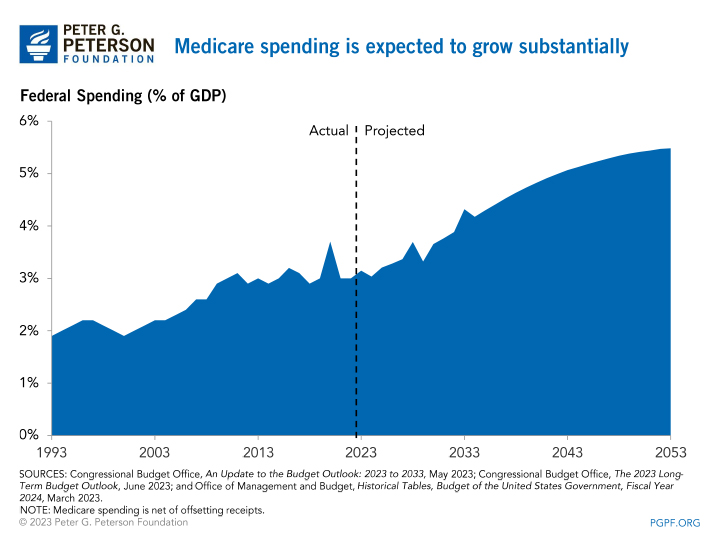The United States spends significantly more on health care than other countries, but health outcomes have not improved as much. Moreover, rising health care costs are a major contributor to the nation’s unsustainable national debt, and high health care costs also make it difficult to respond to public health crises like the COVID-19 pandemic. Below, we’ll look at rising healthcare costs in the United States, what’s driving their rapid rise, and why it’s important to public health and the financial outlook.
How much does the US spend on healthcare?
The United States is one of the most expensive countries in the world for healthcare. US healthcare spending in 2021 will reach her $4.3 trillion, which equates to an average of about $12,900 per person. By comparison, the average per capita cost of health care in other wealthy countries is only about half that. The COVID-19 pandemic has exacerbated the trend of rising health care spending, but those spendings were rising long before COVID-19 began. Relative to the size of the economy, healthcare spending has increased over the last few decades, from 5% of GDP in 1960 to 18% of GDP in 2021.


Why is healthcare spending increasing in the United States?
In general, healthcare spending can be thought of as a function of price (dollars charged for healthcare services) and usage (amount of services used). There are a number of underlying factors that can drive up prices and uptake, thereby pushing up healthcare spending. Most notable among those factors are population aging and healthcare prices.
population aging
The percentage of the U.S. population over the age of 65 has increased significantly in recent years, rising from 13 percent in 2010 to 16 percent in 2021. Moreover, that number continues to grow and is projected to reach 20 percent by 2030. People over the age of 65 have higher health care costs on average than any other age group, and the growing number of older people in the United States is expected to increase total health care costs over time.


Additionally, individuals become eligible for Medicare when they turn 65, and program enrollment is expected to grow significantly to 65 million by 2022. The growing number of enrollees is expected to significantly increase Medicare costs over time. In fact, the Congressional Budget Office predicts that Medicare spending will almost double over the next 30 years relative to the size of the economy, rising from he 3.1 percent of GDP in 2023 to he 5.5 percent by 2053. doing.


Increased cost of medical services
Another important factor in US healthcare spending is price. The cost of health services typically increases faster than the cost of other goods and services in the economy. Over the past 20 years, the consumer price index (CPI), which is the average change in prices paid by urban consumers for various goods and services, has grown at an average of 2.5% per year, while his CPI for healthcare has averaged I grew up. That’s a rate of 3.2% per year.


There are many possible reasons for soaring medical costs.
- The introduction of new and innovative medical technologies can lead to better and more expensive treatments and products.
- The complexity of the US healthcare system can create administrative waste in insurance and provider payment systems.
- Hospital consolidation can lead to lack of competition and monopolies, giving healthcare providers an opportunity to raise prices.
However, more research is needed to confirm why healthcare costs are increasing so rapidly.
Why Rising Health Care Costs Matter
If high medical costs lead to better health outcomes, that’s another story. But not in the US. When assessing general health indicators, The United States lags behind other countries even though it spends more on such goods and services.


High health care costs are weighing on already tight fiscal situations and are one of the main drivers of long-term structural imbalances in spending and revenue that are embedded in national budgets. Keeping high medical costs in check is critical to our country’s long-term financial and economic health.For information on how to resolve some of these issues, see the Solutions page and Peterson Healthcare Center.
Related: Infographic: U.S. Healthcare Spending
Image Credits: Photo Credit: Chip Somodevilla/Getty Images

